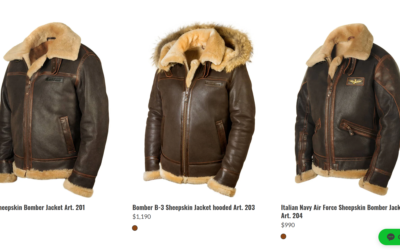As Bangladesh is emerging with a booming Textile Industry, Fashion Design turns out to be a sector for the future. A lot of Fashion Designers are emerging in our country from different Textile & Fashion institutions. As an organization of fashion & Innovation, Fashionnovation is working with the prospect of this sector. Our team talked with Fashion Designer Suravi Jahanara who is currently working as a Chief Designer in a German Company named Colombus textilvertrieb GmbH. In the interview, she talked about her journey, the current scenario of fashion designers and also their earning. (This interview is a part of our ‘Interview fashion designer’ project.)
Fashionnovation: Working as a Chief Designer in a German company, can you share your professional experience as a fashion designer from the beginning?
-
- After finishing my graduation (Hons.) Fashion Design & Technology, I joined in H&M as production intern. My internship was with the merchandising team. I was assigned in the denim team and my main job focus was order follow up and execution and other relative works.
- subsequently to my internship I joined in a factory called Concorde Garments Ltd as 3D technologist. This factory specialized in woven shirts worked with the buying house PVH and their iconic brands like arrow, Izod etc. I was responsible for developing 3D fit samples. Additionally, I was a support to their design team.
- In 2018 I joined again in H&M as Researcher & Developer in the ladies knit division both Jersey and Sweater. Main focus for this job was to develop material and develop the suppliers according to H&M buying preferences.
- Currently I am a chief designer in German Liaison buying house. Main job focus is to offer customers designs according to their brand images. From initial development to surface decoration and preparing Spec sheet for the final orders.
Fashionnovation: You’re currently working at Colombus Textilvertrieb GmbH, can you briefly describe the structure of ‘DPD- Design and Product Development’ of your company?
Suravi Jahanara:
-
- This company’s values pretty simple and straight forward. They prefer quality over quantity. So, product quantity is not as much as other buying houses and they are also very limited people specializing for each brand or customers. The main office is located in Germany where they have another designer responsible for German region. And me; responsible for Bangladesh region. Each of us handles different product category solely.
Fashionnovation: What is the salary scale of Fashion designers in both the Textile Industry & multinational companies?
Suravi Jahanara:
-
- Prior to the covid situation salary structure was different. In traditional sense, the structure really varies from company to company and it is also based on the experiences and negotiation.
- First of all; not a lot of companies in both textile industry and in multinational companies hires designers. The pool for designers is really limited. And compared to factory, multinational companies offer additional plans such as tax, medical insurance, provident fund, yearly increments etc. For factories it is the salary only.
so basically, there is no guarantee which is better, really depends on what sort deal you are settling for.
Fashionnovation: There is a conventional idea about Bangladeshi Industry that most of the design of our RMG comes from foreign countries. So, our question is that what is the current working process of DPD in Bangladesh?
Suravi Jahanara:
-
- Yes, most the design comes from foreign countries. In BD, the DPD is more focused on production friendly options rather than experimenting. Even though the trend is same for all the fashion followers but for each brand they want to see different options according to brand profile. What that mean is to see different interpretation of the same concepts. But in BD it is a common notion that R&D is waste of resources. In my personal opinion this notion has stopped BD designers to think outside the box. So, they develop products based on whatever leftover of the material they have input/output creating authentic designs. Whereas other countries they do not compromises on their designs.
Fashionnovation: Currently, there is a lot of Fashion House (Such as Aarong, Yellow etc.) emerging in Bangladesh. What are the technical differences between the Industrial design department & designers of these Fashion houses?
Suravi Jahanara:
-
- Since I have not personally worked in any of the local brands so my answers will not be very specific. But there is a huge difference. For the fashion houses, market researching is a blank space. As a consumer of these brands, we are not offered much different options specially in terms of materials. They are all very common fabric that we have been using for decades. It is just different cuts and prints. The working procedure is very basic. Buy the material locally available and affordable mostly from Islampur, then make something out of it. The only variation is on the surface decoration, patterns and color palettes.
You can also read Fashionnovation Your Mentor Talks’ First Episode with Ms. Ummey Hani Barsha
Fashionnovation: What is the salary scale of Designers working in the Fashion House?
Suravi Jahanara:
-
- Depends on the organization policy and experiences. Brands like Aarong or Yellow offers good salary due to under big organization. But other local brands offer much less compared to textile industries and multinational companies.
Fashionnovation: There is a lot of Designers who work as Freelancer. Can you describe their work field and earnings?
Suravi Jahanara:
-
- A freelancer could earn money in so many possible ways. The rate can be hourly or as a package depending on the volume of the work. If he/she only developing prints or AOP the rate would be different. If the designer is creating a seasonal collection the rate would be different. The designer could be asked to develop brand logo designs or label designs. It’s all in the negotiation. The drawback of freelancing is that the payment is never constant and sometimes the buyers are reluctant towards payment.
Interview Conducted By,
Shariful Islam Akash & Sabiha Moon Taha
Department of Textile Fashion & Design
Bangladesh University of Textiles
As you seem to be both tech savvy and fashionista, you will enjoy our premium article on Textile in space: Flying up to reach the stars! This is the second chapter of the article!
To know the biggest fashion trends of 21st century, you can visit here! Moreover, if you want to know the future of fashion industry after Covid-19, you can click here!
And if you want to read one of our premium case studies on Fast Fashion Vs Slow Fashion, you can go here!
You can also read our interesting and well researched article on: Architecture Fabric: The New Use of Textiles as A Building Material
National Institute of Fashion Technology (NIFT), Hyderabad, A Heaven for The Fashion Learners




0 Comments